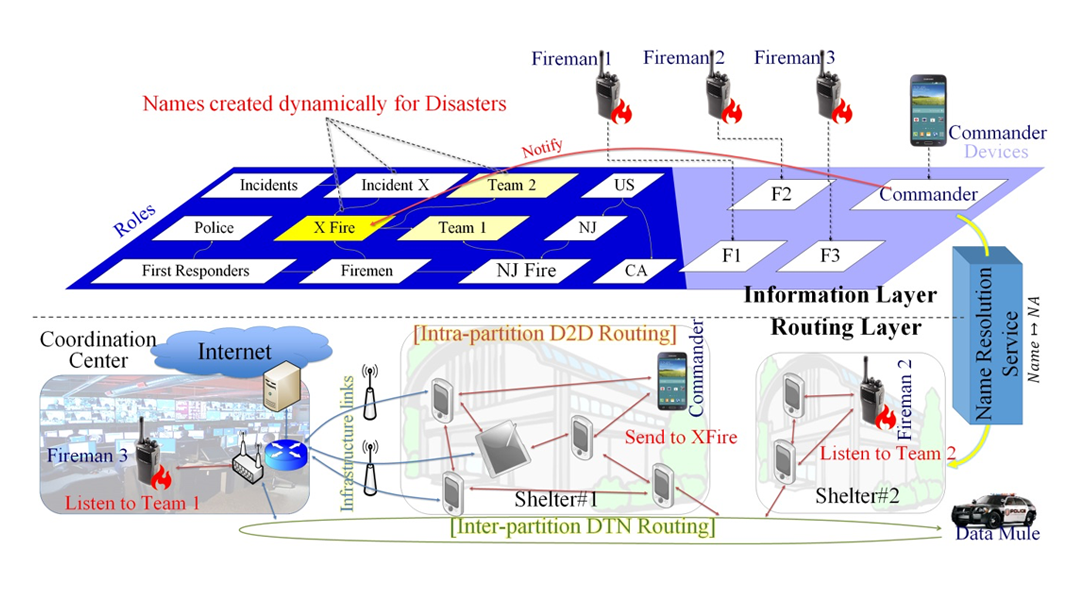Modeling and Development of Resilient Communication
Overview

Overview
Effective communication among first responders during and in the aftermath of a disaster can affect outcomes dramatically. We seek to build a resilient architecture that allows first responders to communicate even with: (i) damage to infrastructure – civilian and/or specialized communication facilities may be damaged by the disaster, (ii) congested channels – because affected people report something about the disaster, and these messages may be broadcast, (iii) dynamically formed groups – first responder teams may be formed dynamically in response to a disaster and team member addresses (e.g., phone numbers) may not be known to one another, (iv) impediments to communication – because the new command chain to manage the disaster may be different from the original organizational hierarchy,(v) poor interoperability – each sub-team might use different communication facilities, and (vi) security attacks – disaster situations are often vulnerable to attacks, requiring authentication and authorization as well as establishing data integrity and provenance. This work is supported by NIST grant #70NANB17H188.
